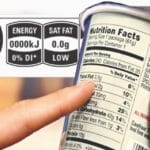Hazard Analysis Critical Control Points (HACCP) is a familiar term for those within the food and beverage industry. Less familiar is the idea that plant operators should include steam in their HACCP based manufacturing. Francisco Pedrosa, a regional clean steam specialist at Spirax Sarco, explains why steam should be central to HACCP in food and beverages.
For food and beverage manufacturers, the proactive management of food quality and food safety is already of paramount importance. Indeed, preventing contaminants from entering into the production process is the central aim of those following a HACCP based manufacturing approach.
However, while HACCP may come as second nature to plant operators, it remains all too easy to bypass steam as a conduit through which contaminants could be introduced into the food processing chain – leaving the quality of the end product exposed to the contamination risks.
Steam is as much a key ingredient in the production of the end product as the eggs, the sugar, or the milk. It is important therefore to remember that using the right grade of steam in the plant will have an impact on the quality of your end product.
Despite having passed through a fine stainless-steel filter, typically of five microns in size, the potential contamination risks of both particulates like rust, scale and other pipe debris and chemical contamination – from boiler chemicals or cross contamination risks from other sources, such as Cleaning-in-Place (CIP) chemicals still remains.
Stainless-steel filters are not designed to remove suspended water droplets within the steam. Therefore, if the filter is unable to remove boiler carryover and other contaminants, they could still find their way through the filter, leading to possible process or product contamination – impacting the quality of the goods.
The quality of your ingredients will already be at the forefront of your mind, but as a plant operator, you should see steam quality testing as an important stage in the food production process.
Plant managers questioning the alternatives could find benefits from introducing clean steam into the manufacturing process as a way of overcoming the potential contamination risks associated with filtered/culinary steam. Clean steam – though not mandatory in food and beverage manufacturing – is the highest grade of steam and is used as a standard in a range of quality-critical processes by many food manufacturers to ensure that the quality of their produce is not compromised.
Whilst steam is the most efficient method of transferring heat to your process, plant managers must ensure it is free from contaminants. This will help to improve the overall quality of your products and reduce your maintenance workload. After all, you wouldn’t use contaminated machinery to produce the food, so why risk the quality of your output by not giving steam the attention it deserves?
To produce clean steam, a secondary generator is used which allows for the control of feedwater quality – eliminating the water treatment chemical contamination risks.
Investing in quality is second-nature to those within the food and beverage industry. Making the move from culinary steam to clean steam generation is an investment in ensuring the repetitive and consistent steam quality of the end product at all times.
Those managing food production lines already have a sharp eye for food quality and food safety procedures. Introducing clean steam into your plant can give you total assurance in improving quality standards – making it a great deal easier to tick that all-important HACCP box.
Plant operators often lack the knowledge of how to include steam in HACCP approaches. By making use of a ‘walk the plant’ audit, for example, plant operators can take the opportunity to find and explore new ways of improving the quality of food and beverage products by assessing the role of steam in the manufacturing process. This is increasingly a requirement from major retailers who, along with manufacturers, are responsible for ensuring the food safety and food quality.
ALSO READ:
Quality Assurance in Food Industry
Cleaning and Sanitation — A Key to Avoid Food Contamination
















